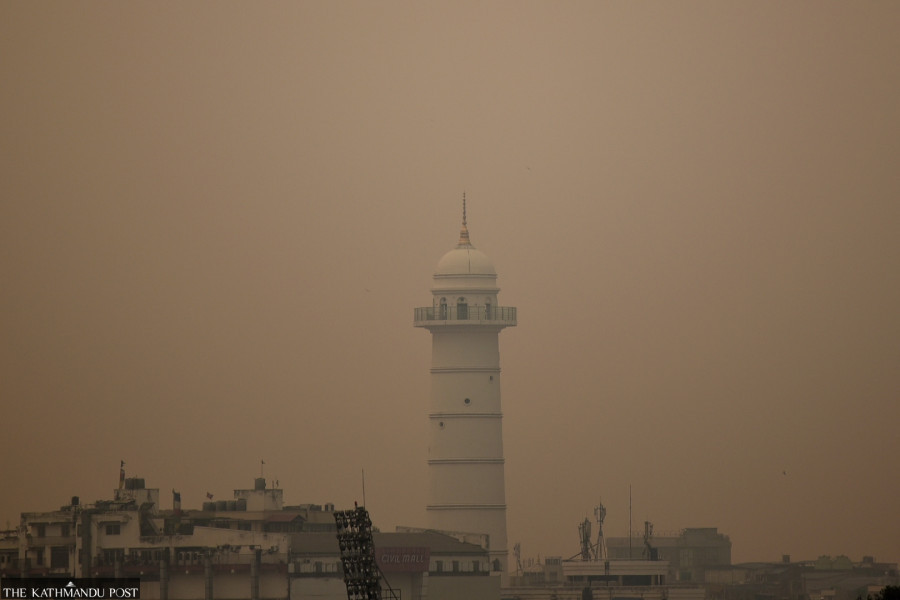Editorial
Unbreathable
The government has failed to provide people with clean air, depriving them of a basic human right.
A few weeks ago, Prime Minister Pushpa Kamal Dahal danced on stage in Pokhara after declaring the lake city Nepal's “tourism capital”. Just a few weeks later, the country’s most popular tourist destination is not just uninviting but also uninhabitable. The road link to Pokhara along the Siddharth Highway is full of dust emanating from the under-reconstruction road, the sky above the city is filled with smoke from wildfire, and the inner city is shrouded by a thick pall of carbon monoxide emanating from the exhaust pipes of public vehicles and trucks. As per a report published in onlinekhabar.com, 30 out of 35 public vehicles undergoing pollution tests there on Wednesday failed.
The federal capital, Kathmandu, fares no better. What Bhupi Sherchan once called a “cold ashtray” is now a bowl of dust and smoke, causing temporary and long-term health complications. Air pollution is known to cause pneumonia, bronchitis, conjunctivitis, skin allergy and stroke in the short run while it can cause severe conditions like ulcers, and cancer of the lungs and intestine, kidney disease and heart complications in the long run. Considering how careless we are at curbing air pollution, we are preparing recipes for disaster: every nook and cranny of our roads are dug up and left unattended, and trucks and buses that ply on the bumpy roads are hardly checked for pollution. Vehicles that have green stickers, meaning they have passed the pollution test, emit thick, black smoke themselves, forcing commuters to pontificate on the corruption stories behind those stickers.
On Wednesday, Kathmandu’s air quality index stood at 137, considered “unhealthy for sensitive groups,” with particulate matter 2.5 remaining 10 times the World Health Organization annual air quality guideline value. The previous day, the air quality stood at 166, which is considered unhealthy for everyone, with the air quality monitoring website IQAIR recommending the use of air purifiers. Well, the city’s wealthier residents may afford air purifiers, and some certainly install a few inside their homes and offices. But for a large section of the population, purchasing air purifiers is not an option. In the second week of April, the particulate matter pollution level in Kathmandu Valley reached 34 times the WHO’s air quality guideline.
It is unfathomable how air pollution hardly ever becomes a cause of concern even for senior leaders who hope to continue clinging to power for many more years from now. Thanks to the insensitivity of the political leadership and bureaucracy towards curbing air pollution, Kathmandu remains one of the most polluted cities in the world. This not only hampers the quality of life of the residents, it also negatively affects the life expectancy of the residents. Moreover, pollution is a major public health hazard, causing a significant dent in the public exchequer and people’s savings.
We cannot go on like this. There are enough legal mechanisms in place to control the pollution. The government must immediately spring into action and enforce those measures to curb air pollution. Access to clean air is a basic human right, and the government cannot remain lethargic when it comes to securing people’s rights. It cannot let its citizens breathe toxic air and see them lose precious years of their lives.




 8.12°C Kathmandu
8.12°C Kathmandu














